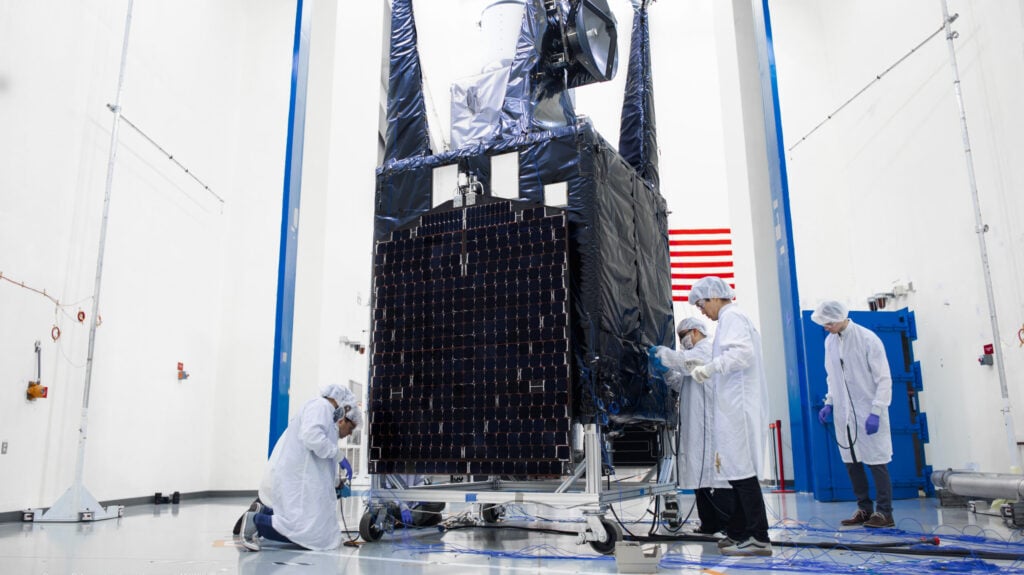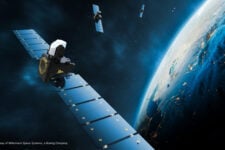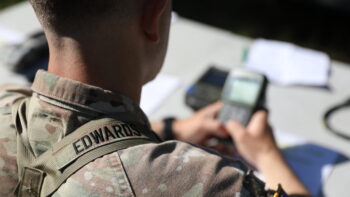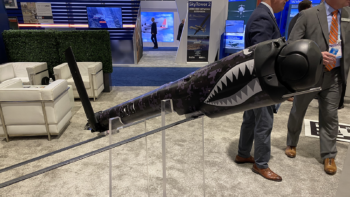
Space Force’s Wide Field of View Testbed satellite for missile warning. (Photo: Millennium Space Systems)
WASHINGTON: When it goes up into orbit today, the Space Force’s experimental Wide Field of View (WFOV) Testbed satellite will test new infrared sensor capabilities aimed at detecting and tracking hypersonic missiles — and helpingto work out the technological kinks for the service’s flagship Next-Generation Overhead Persistent Infrared (Next-Gen OPIR) constellation, according to program officials.
But the effort also will provide lessons and technologies that could be reproduced by the service’s other missile warning/tracking programs with satellites in different orbits, Space Force and industry officials told reporters at a pre-launch briefing June 28.
The WFOV satellite, being built by Boeing’s Millennium Space Systems, is expected to launch this evening on a United Launch Alliance (ULA) Atlas 5 rocket, under the National Security Space Launch program. It was originally set for launch in August 2021, and was again delayed this spring for unspecified reasons. (The satellite itself was cleared for shipping to the Space Force in June 2020.)
The testbed “will mature large format focal plane sensor technology, algorithm development and ground integration for the future resilient OPIR architecture,” Col. Brian Denaro, Space Systems Command (SSC) program executive officer for space sensing, said during the briefing.
“As a wide field of view serves as an important risk reduction for the Space Warfighting Analysis Centers force design for missile warning and missile tracking, we are committed to providing that risk reduction for the enterprise,” he added.
The WFOV satellite will be launched to Geosynchronous Earth Orbit (GEO, some 36,000 kilometers in altitude) and originally was developed as part of the Next-Gen OPIR effort. The mid-sized bus is about one-fourth the size of the current Space Based Infrared System (SBIRS) missile warning sats, according to Millennium’s website, and is designed for a three-year life cycle.
“With Wide Field of View, we’re advancing the technology we need to meet the growing threat environment,” said Col. Heather Bogstie, senior materiel leader for SSC’s Resilient Missile Warning, Tracking, and Defense Acquisition Delta. “GEO WFOV will also let us qualify a new satellite bus for GEO at significant cost savings.”
Bogstie’s Delta is leading the new Space Force program to develop and build at least four satellites in Medium Earth Orbit (ME) by 2028, optimized to detect and keep tabs on hypersonic missiles — which are a challenge for current sensors because they are dimmer than ballistic missiles, and also are capable of high-speed maneuvers.
Further, officials speaking at the briefing explained, the sensor “eye” at the heart of WFOV also could be used by the Space Force’s planned missile warning/missile tracking constellation in MEO, as well as the Space Development Agency for its Tracking Layer satellites in Low Earth Orbit (LEO), officials participating in the briefing explained.
“That is applicable across multiple layers regardless of altitude,” Denaro said.
Built by L3Harris, the “large format” focal plane sensor — at 4,000 pixels by 4,000 pixels (4k X 4k) — will be able to track the infrared plumes of missiles over a wider swatch of the Earth at higher resolutions than SBIRS, Bogstie said, adding that it also will feature “reduced noise” in its signal.
“Launching WFOV comes at an opportune time with all of the threats out there now. What’s setting WFOV apart is the 4kx4k staring focal plane array, making it so you’re more likely to catch threats,” Millennium CEO Jason Kim told Breaking Defense in an email. “And WFOV is proving out various technologies and algorithms on orbit which will be transitioned into future programs to keep ahead of the threats.”
The ULA launch, called USSF-12, also includes an Evolved Expendable Launch Vehicle Secondary Payload Adaptor, known as an ESPA-ring, loaded with a number of classified programs for the Defense Department’s Space Test Program.
One of Northrop Grumman’s ESPAStar platforms, the adaptor ring has a separate propulsion unit and sports six portals for hosted payloads, and can carry up to 12 fly-away sats, according to Northrop’s website.
Matt Verock, Northrop Grumman’s vice president for space security, said that while the EPSAStar is optimized for GEO, it also can be adapted for MEO and LEO launches.
“The ring supports 1,920 kilograms of payload and is propulsive over 400 meters-per-second delta V in any direction. So, that allows a lot of flexible and affordable missions that we can accomplish,” he said.
The overall cost of the USSF-12 mission is approximately $1.1 billion, an SSC spokesperson said, but for proprietary reasons wasn’t able to provide a breakdown between the two payloads.
Space Force asked for nearly $3.5 billion for the overall Next-Gen OPIR program, in its fiscal 2023 budget, up $1 billion from FY22. The constellation will include three GEO sats built by Lockheed Martin, and two satellites in a Highly Elliptical Orbit over the poles. SSC is planning the first GEO satellite launch in 2025.
Army wants different GPS alternatives for different domains, including commercial tech
“I don’t want to take a very expensive, very, very capable [alternative] PNT system that belongs on, let’s say, a Stryker platform or an Abrams tank or something like that, and … stick it on the robot that is the one that I’m training to take first contact,” Michael Monteleone, head of the Army’s new All-Domain Sensing CFT, explained.


























